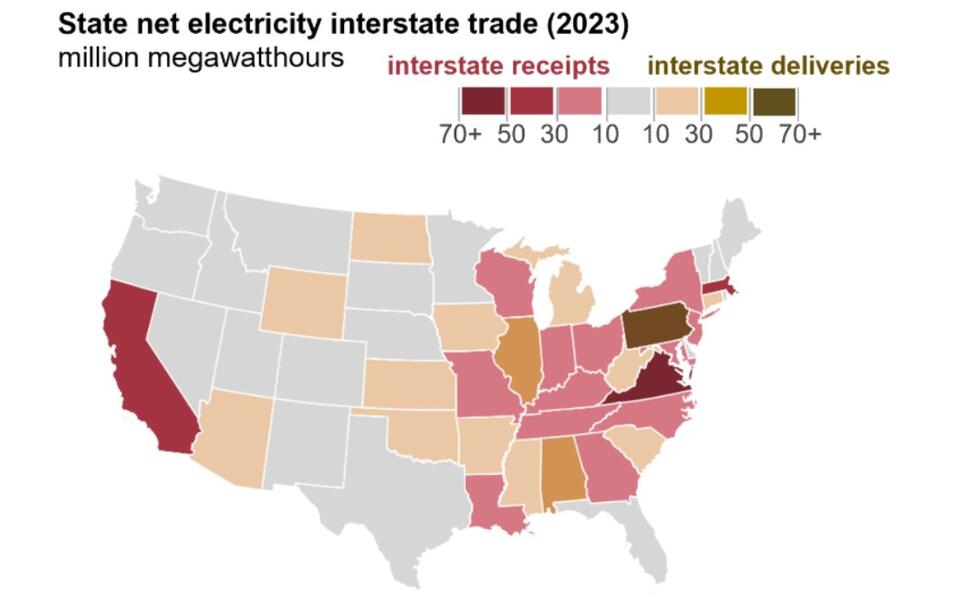Increased reliance on natural gas for power generation

By Jeff Bolyard
In late 2024, the Energy Information Administration (EIA) published an analysis of how demand and interstate trade for power flows across the contiguous 48 states. What it showed was that not all states can generate enough electricity to meet their demand, often having to import power. Meanwhile, other states generate more and are able to export power to fill that gap. The analysis was based on 2023 data and ranked each state by their ability to generate power compared to the demand for power within their state.&
The below graphic from that report highlights which states exported (i.e., generated more power than what they consumed) and which states required imports from other states to meet statewide demand.

The top five power exporting states for 2023 were Pennsylvania (83 million MWh), Alabama (45 million MWh), Illinois (38 million MWh), Wyoming (24 million MWh), and Arizona (22 million MWh).
Other states required significant amounts of imported power to meet demand. California had long held the unenviable position of biggest power importer. However, in 2023, Virginia took the lead, bringing in 50 million MWh from other states. California followed at 34 million MWh, with Massachusetts, Tennessee, and Georgia rounding out the top five importers.
According to the EIA, the top five importers of power rely on natural gas for an average of 44.6% of their in-state nameplate capacity, totaling 88,809 MW. The average nameplate capacity tied to natural gas for four of the top five power exporters is 49.8%, or 83,172 MW. The fourth largest exporter, Wyoming, has 60.3% (6,694 MW) of coal capacity and 29.1% (3,229 MW) of wind at its export disposal. Illinois, the third largest exporter, relies on a more balanced generation mix, with 19,899 MW of natural gas, 12,415 MW of nuclear, and 7,904 MW of wind.
Overall, in 2023, natural gas’s nameplate capacity was 1.143 million MW, and it accounted for 43.5% of all power generated in the U.S. for the first 10 months of 2024.
Power demand is currently growing faster than the market’s ability to add renewables to meet that demand. A high percentage of dispatchable and baseload fuel sources are required to meet it. Until that trend changes, natural gas will continue to grow and be essential for states that are either deficient in power generation or those that have excess, with very few exceptions.
